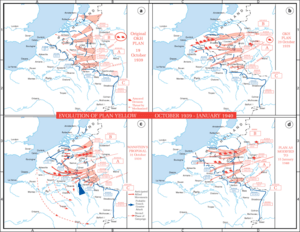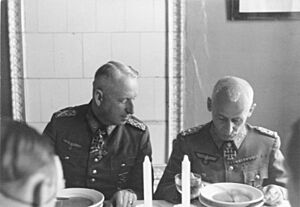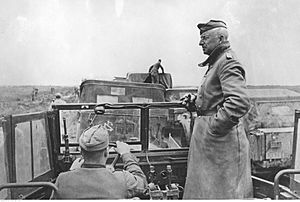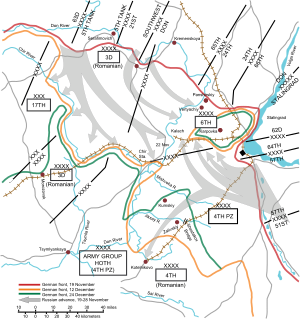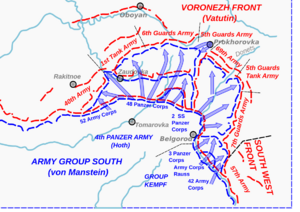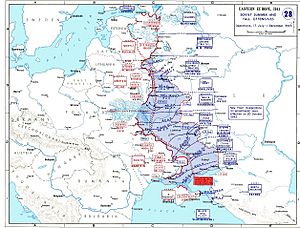Erich von Manstein facts for kids
Quick facts for kids
Erich von Manstein
|
|
|---|---|

Manstein in 1938
|
|
| Birth name | Fritz Erich Georg Eduard von Lewinski |
| Born | 24 November 1887 Berlin, Kingdom of Prussia, German Empire |
| Died | 9 June 1973 (aged 85) Irschenhausen, Bavaria, West Germany |
| Buried |
Dorfmark, Bad Fallingbostel
|
| Allegiance |
|
| Service/ |
|
| Years of service |
|
| Rank | Generalfeldmarschall |
| Commands held |
|
| Battles/wars |
|
| Awards | Knight's Cross of the Iron Cross with Oak Leaves and Swords |
| Spouse(s) |
Jutta Sibylle von Loesch
(m. 1920; died 1966) |
| Children | 3 |
| Relations |
|
| Other work | Served as military advisor to the West German government |
| Signature | |
Erich von Manstein (born Fritz Erich Georg Eduard von Lewinski; 24 November 1887 – 9 June 1973) was a German Field Marshal in the German Army during World War II. He was later held responsible for certain actions during the war and spent time in prison.
Manstein came from a noble Prussian family with a long history of military service. He joined the army when he was young. He fought in both the Western and Eastern Fronts during World War I (1914–18). After the war, he helped Germany rebuild its armed forces. In September 1939, at the start of World War II, he was a chief of staff during the invasion of Poland.
Manstein suggested a new plan for the Battle of France in May 1940. This plan involved a surprise attack through the Ardennes forest. This would cut off French and Allied armies. After this successful campaign, he became a general. He then took part in the invasion of the Soviet Union in June 1941. He led forces in the siege of Sevastopol (1941–1942). He was promoted to field marshal in July 1942. He also helped in the siege of Leningrad.
In December 1942, during the Battle of Stalingrad, Manstein led a failed attempt to rescue German forces. However, his counter-attack in the Third Battle of Kharkov (February–March 1943) helped Germany regain land. It also led to the defeat of several Soviet armies. He was a main commander at the Battle of Kursk (July–August 1943). Manstein often disagreed with Adolf Hitler about how to fight the war. This led to his dismissal in March 1944. He was taken prisoner by the British in August 1945.
After the war, Manstein gave information at the Nuremberg trials. He also wrote a paper that helped create the idea that the German army was not involved in terrible acts during the war. In 1949, he was put on trial in Hamburg. He was found responsible for certain actions and was sentenced to prison. His sentence was later reduced, and he was released in 1953. In the mid-1950s, he advised the West German government on rebuilding their armed forces. He wrote a book called Lost Victories (1955). It criticized Hitler's leadership. Manstein passed away near Munich in 1973.
Contents
- Early Life and Military Beginnings
- Serving in World War I
- Between the World Wars
- World War II Campaigns
- Invasion of Poland
- Planning the Attack on France
- Operation Sea Lion: Invasion of Britain
- Invading the Soviet Union
- Campaign in Crimea and Sevastopol
- Siege of Leningrad
- Battle of Stalingrad and Aftermath
- Kharkov Counter-offensive
- Operation Citadel: Battle of Kursk
- Retreat to the Dnieper River
- Battle of the Dnieper
- After His Dismissal
- Life After the War
- Awards and Recognition
- Images for kids
- See also
Early Life and Military Beginnings
Family Background and Education
Erich von Manstein was born in Berlin in 1887. His birth name was Fritz Erich Georg Eduard von Lewinski. He was the tenth son of an artillery general. His aunt and uncle adopted him because they could not have children. Both his biological and adoptive fathers were Prussian generals. Many other relatives were also military officers.
Manstein went to school in Strasbourg from 1894 to 1899. Then he joined the cadet corps. He was known for being smart and capable. In 1906, he became an ensign in the Third Foot Guards Regiment. He was promoted to lieutenant in 1907. In 1913, he started officer training. However, World War I began in 1914, and he had to go to active service. He never finished his full training.
Serving in World War I
Fighting on Two Fronts
During World War I, Manstein fought on both the German Western and Eastern Fronts. He was promoted to lieutenant at the start of the war. He took part in the invasion of Belgium in August 1914. His unit helped capture Namur. Later, he was sent to East Prussia.
Manstein was wounded in November 1914 during a retreat. He was shot in the shoulder and knee. He spent six months recovering in the hospital. In 1915, he became an assistant general staff officer. He learned how to plan attacks. His unit had successful attacks in Poland, Lithuania, and other areas.
He also served near the Somme River, where many battles took place. In October 1917, he became chief of staff for the 4th Cavalry Division. This unit served in Riga during the German occupation. After a peace treaty was signed in March 1918, his unit was no longer needed on the Eastern Front. He was moved to the 213th Infantry Division near Reims. The war ended with an armistice on 11 November 1918.
Between the World Wars
Building a New Army
Manstein stayed in the army after World War I. In 1920, he married Jutta Sibylle von Loesch. They had three children: Gisela, Gero, and Rüdiger. Sadly, Gero died in battle in 1942.
Manstein helped reshape the German army, called the Reichswehr. The Versailles Treaty limited the army to 100,000 men. Manstein was one of only 4,000 officers allowed to stay. He was seen as a talented commander. He taught military history and tactics. In 1927, he was promoted to major. He helped plan how the army would mobilize.
In 1933, the Nazi Party took power in Germany. They ignored the Versailles Treaty and began to rebuild the military. Manstein was promoted to colonel in 1934. He became head of the Operations Branch of the Army General Staff in 1935. He helped develop defensive plans for Germany. He also worked on ideas for new self-propelled assault guns, called Sturmgeschütze (StuG). These vehicles were very successful in World War II.
In 1936, he became a major general. In 1938, he was given command of the 18th Infantry Division. He was promoted to lieutenant general. On Hitler's 50th birthday in 1939, Manstein gave a speech praising Hitler.
World War II Campaigns
Invasion of Poland
In August 1939, Manstein became Chief of Staff for Army Group South. This group was preparing for the invasion of Poland. Manstein helped plan the attack. He suggested focusing most of the armored units to break through Polish defenses. This would surround Polish forces.
The invasion began on 1 September 1939. It was very successful. German forces quickly advanced. The Polish army was defeated in several battles, including the Battle of the Bzura. Poland was conquered quickly.
Planning the Attack on France
The first plan for invading France was called Fall Gelb (Case Yellow). It involved attacking through the Netherlands and Belgium. Manstein did not like this plan. He thought it would not be a surprise. He also worried about counterattacks.
Manstein created a different plan with Heinz Guderian. They suggested attacking through the Ardennes forest. This was a wooded, hilly area where no one would expect tanks. Then, they would quickly drive to the English Channel. This would cut off the French and Allied armies in Belgium. This part of the plan was called the Sichelschnitt ("sickle cut").
At first, the German High Command rejected Manstein's idea. But Hitler liked the idea of a surprise attack. After some changes, Hitler approved a modified version of Manstein's plan in February 1940. Manstein's corps played a smaller role in the invasion of France. His corps helped break through east of Amiens. They were the first to cross the Seine River. The invasion of France was a huge success. Manstein was promoted to general and received a high award.
Operation Sea Lion: Invasion of Britain
Manstein supported the idea of invading Great Britain. This was called Operation Sea Lion. He thought it was risky but necessary. However, the German air force could not defeat the British Royal Air Force. So, the invasion was put off. Manstein had little to do for the rest of the year.
Invading the Soviet Union
In July 1940, Germany began planning to invade the Soviet Union. This was called Operation Barbarossa. In March 1941, Manstein became commander of the LVI Panzer Corps. His corps was part of the Fourth Panzer Group. Their goal was to push through the Baltic States and advance on Leningrad.
Operation Barbarossa started on 22 June 1941. Manstein's corps advanced very quickly. They covered 315 km in just 100 hours. They faced many Soviet counterattacks. His corps was deep inside Soviet lines. In August, the Red Army launched a big attack. Manstein's counter-attack led to a major Soviet defeat. His unit surrounded five Soviet divisions. They captured many prisoners and tanks.
On 12 September, Manstein was ordered to take over the 11th Army in Ukraine.
Campaign in Crimea and Sevastopol
In September 1941, Manstein became commander of the 11th Army. This army was to invade the Crimean Peninsula and capture Sevastopol. Manstein's forces, mostly infantry, quickly broke through Soviet defenses. They captured most of the Perekop Isthmus.
Manstein's first attack on Sevastopol in November failed. He did not have enough forces for a direct assault. He ordered his troops to surround the city. A second offensive in December also failed. Soviet troops landed on the Kerch Straits. Manstein had to send most of his forces to destroy this Soviet foothold.
For the Battle of the Kerch Peninsula in May 1942, Hitler gave Manstein strong air support. Manstein used a clever tactic, faking an attack in the north. The Soviet troops soon fled. Manstein reported capturing 170,000 prisoners. Kerch was captured on 16 May.
After this, Manstein focused on Sevastopol again. Germany used some of the largest guns ever built for this attack. A huge bombardment began on 2 June 1942. It lasted five days. The ground assault then began.
The 11th Army gained ground in mid-June. Casualties were high for both sides. Manstein ordered a surprise amphibious landing on 29 June. This was successful, and Soviet resistance collapsed. On 1 July 1942, German forces entered the city. Hitler promoted Manstein to Field Marshal the same day. The city was fully captured by 4 July 1942.
Siege of Leningrad
After capturing Sevastopol, Manstein was sent to the Siege of Leningrad. This city had been under siege since September 1941. Manstein planned a bold attack to cut off Leningrad's supply line.
However, the Red Army launched its own attack on the day Manstein arrived. This attack threatened to break through German lines. Hitler ordered Manstein to take action. After heavy fighting, Manstein launched a counterattack. He cut off two Soviet armies. The Soviet offensive was stopped. However, the German army could no longer launch a major assault on Leningrad. The siege was finally lifted by Soviet forces in January 1944.
Battle of Stalingrad and Aftermath
In 1942, Germany launched a huge attack aimed at the Caucasian oilfields. The 6th Army was tasked with capturing Stalingrad, a key city. Soviet forces launched a massive counteroffensive in November. This surrounded the German armies in the city. Hitler appointed Manstein to command the new Army Group Don. His task was to rescue the trapped German forces.
Manstein's son, Gero, was killed in battle in October 1942. Manstein later called this "The worst thing that happened to me personally during the war."
Manstein's rescue operation, called Operation Winter Storm, began on 12 December. It had some early success. His Panzer divisions advanced to within 48 km of Stalingrad. Manstein asked Hitler to let the 6th Army try to break out. Hitler refused. Conditions inside the city became very bad. The men suffered from cold, hunger, and lack of supplies. On 24 January, Manstein urged Hitler to allow the 6th Army to surrender. Hitler again refused. The 6th Army surrendered on 31 January 1943. Around 200,000 German and Romanian soldiers died. Only 6,000 survivors returned to Germany after the war.
Meanwhile, the Red Army launched more attacks. These attacks threatened the entire German front in southern Russia. To deal with this, Army Group Don and other units were combined into Army Group South under Manstein's command.
Kharkov Counter-offensive
In February 1943, the Red Army broke through German lines. They retook Kursk. Manstein asked for more troops. Hitler insisted that Kharkov be held. However, the city was evacuated on 15 February. Hitler met with Manstein on 17 February. Manstein convinced him that an attack was needed.
Manstein immediately planned a counter-offensive. It began on 20 February. The Soviet forces were surprised. By 2 March, the German army had captured many tanks and killed many Soviet soldiers. Hitler again visited the front lines on 10 March. Manstein's forces recaptured Kharkov on 14 March. This was known as the Third Battle of Kharkov. For this success, Manstein received a high award. His counter-offensive had saved the front. It also regained land and defeated several Soviet armies.
Operation Citadel: Battle of Kursk
Manstein wanted to attack the Kursk area right after Kharkov. But Hitler was worried about moving forces. Also, the ground was too muddy for tanks. The German High Command planned Operation Citadel. This attack would be delayed until more troops arrived. Meanwhile, the Red Army also brought in many reinforcements. They knew where and when the German attacks would come.
Citadel was the last major German attack on the Eastern Front. It was one of the largest battles in history. Over four million men were involved. When the German attack began on 5 July 1943, Soviet forces outnumbered them almost three to one.
German tanks were slowed by minefields and strong Soviet defenses. After five days, the German advance in the north stopped. Manstein's forces in the south were able to break through Soviet lines. They caused heavy losses. He reached Prokhorovka, a major objective, on 11 July.
However, on 13 July, Hitler called off the Kursk offensive. The Allies had landed in Sicily. Manstein protested. He felt the Soviet forces were exhausted. But Hitler insisted on stopping the operation.
Retreat to the Dnieper River
Manstein thought the Battle of Kursk was a German victory. He believed he had destroyed much of the Red Army's attack power. But he was wrong. The Red Army recovered quickly. A Soviet attack began on 3 August. It put Army Group South under great pressure.
Manstein asked for more troops. Hitler sent some divisions. Manstein fought several counterattacks and tank battles in August. These battles caused heavy losses. On 20 August, he told the High Command that his forces were spread too thin. He needed to retreat or get more troops. Continuous Soviet pressure separated German army groups. Hitler finally allowed Manstein to retreat across the Dnieper River on 15 September. During the retreat, Manstein ordered a "scorched earth" policy. This meant destroying resources in a zone near the river.
Manstein met with Hitler several times in September. He tried to convince Hitler to let his generals make more military decisions. But Hitler refused.
Battle of the Dnieper
In September 1943, Manstein retreated to the west bank of the Dnieper River. This retreat was mostly orderly. Manstein correctly guessed that the next Soviet attack would be towards Kiev. But the Red Army used deception to hide their plans.
Soviet forces attacked near Kiev. German troops were surprised. Kiev was liberated on 6 November. The 17th Army was cut off in the Crimea. Manstein's repeated requests to Hitler for more troops were denied. On 4 January 1944, Manstein told Hitler that the Dnieper line could not be held. He needed to retreat to save his forces. Hitler refused. Manstein again asked for changes in military leadership. Hitler believed only he could manage the strategy.
In January, Manstein was forced to retreat further west. He ordered his forces to break out of the Korsun Pocket without waiting for Hitler's permission. By early March, the Soviet forces had pushed the German army far back. On 21 March, Manstein's 1st Panzer Army was surrounded. Hitler had ordered that all positions be defended to the last man. Manstein flew to Hitler's headquarters to convince him to change his mind. Hitler eventually agreed. But he removed Manstein from his command on 30 March 1944.
Manstein appeared on the cover of Time magazine on 10 January 1944. The caption said, "Retreat may be masterly, but victory is in the opposite direction."
After His Dismissal
Manstein received the Swords of the Knight's Cross on 30 March 1944. He handed over command of Army Group South on 2 April. He then went on medical leave to recover from eye surgery.
On the day of the failed plot to assassinate Hitler (20 July 1944), Manstein was at a seaside resort. He was not involved in the plot. He later said, "Prussian field marshals do not mutiny." Still, the secret police watched his house.
Manstein bought an estate in East Pomerania in October 1944. But he had to leave it when Soviet forces took over the area. His home in Liegnitz was evacuated in January 1945. He and his family moved west. The war in Europe ended in May 1945. Manstein was arrested by the British on 26 August.
Life After the War
Legal Proceedings and Imprisonment
Manstein was moved to Nuremberg in October 1945. He helped prepare a document for the defense of the German General Staff. This document helped create the idea that the German army was "clean" and not involved in the terrible acts of the Holocaust. He also gave testimony about the treatment of prisoners of war. He said he did not carry out certain orders, but documents from 1941 suggest otherwise.
In September 1946, the General Staff was not declared a criminal organization. After this, Manstein was held by the British in a prisoner of war camp in Wales. He spent his time walking, gardening, and starting to write books. He corresponded with British author B. H. Liddell Hart, who admired German generals. Liddell Hart later helped Manstein publish his book.
In July 1948, the British decided to put Manstein on trial. His trial was held in Hamburg from August to December 1949. Manstein faced several accusations. These included mistreating prisoners of war and disregarding the safety of civilians. The prosecution used an order Manstein signed in November 1941 to argue that he knew about and was involved in terrible acts. Manstein claimed he did not remember signing it.
Manstein's defense argued that the order was justified. They said that many partisans were Jews, and Manstein wanted to protect his men. He also argued that he was not forced to disobey orders from his government. Manstein said he found Nazi racial policies to be wrong.
Manstein was found responsible for some of the accusations. He was sentenced to eighteen years in prison. His supporters in Britain and Germany protested. The sentence was reduced to 12 years in February 1950. He was released on 7 May 1953. This was partly due to his eye problems and pressure from important figures like Winston Churchill.
Later Life and Writings
After his release, Manstein helped plan the re-founding of the German army in 1955. He spoke to the German parliament about military strategy. His idea to form a reserve force was later put into action.
Manstein's war memoir, Lost Victories, was published in West Germany in 1955. It became a best-seller. The book criticized Hitler's leadership. Historians noted that Manstein focused only on the military side of the war. He did not discuss the political or moral issues. Over the years, he became known as one of Germany's greatest generals.
Manstein and his wife moved several times. His wife passed away in 1966. He published a second book of memoirs in 1958. On his 80th birthday, he received congratulations from the German army's supreme commander.
Erich von Manstein passed away from a stroke on 9 June 1973, at 85 years old. He was buried with full military honors.
Awards and Recognition
- Iron Cross of 1914, 1st and 2nd class
- Knight's Cross of the Royal House Order of Hohenzollern with Swords
- Knight's Cross, First Class of the Friedrich Order with Swords
- Hanseatic Cross (Hamburg version)
- Honour Cross of the World War 1914/1918
- Clasp to the Iron Cross (1939) 2nd Class (16 September 1939) and 1st Class (21 September 1939)
- Knight's Cross of the Iron Cross with Oak Leaves and Swords
- Knight's Cross on 19 July 1940 as General of Infantry
- Oak Leaves on 14 March 1943 as Field Marshal
- Swords on 30 March 1944 as Field Marshal
Images for kids
See also
 In Spanish: Erich von Manstein para niños
In Spanish: Erich von Manstein para niños


